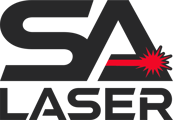Overview Configuring a Ruida Controller
When resetting or installing a Ruida controller, understanding its configuration is essential for ensuring optimal laser performance. A factory reset reverts the controller to Ruida’s stock settings, not the custom settings applied by your laser’s manufacturer. This guide will walk you through configuring your Ruida controller after a reset or when installing a new controller.
Back Up Your Settings
Before making changes, back up your existing configuration:
-
Go to Edit → Machine Settings in LightBurn.
-
Click Save to File to back up your settings.
This ensures you can revert to previous settings if needed.
Understanding Machine Settings
In LightBurn, the Machine Settings window is divided into two sections:
-
User Settings: Configurations that users can adjust as necessary.

-
Vendor Settings: Factory settings specific to the machine. Modify these only when necessary.
To access Vendor Settings, expand the section and acknowledge the warning prompt.

Homing, Directions, and Travel
A Ruida controller uses homing switches to identify axis limits. Follow these steps to ensure proper axis behavior:
Step 1: Correct Direction of Travel
-
Power on the laser.
-
Observe the movement towards the X and Y limit switches. If movement is incorrect, press ESC to stop.
-
Adjust the following settings under Vendor Settings for each axis:
-
Limiter Polarity: Determines if the limit switch triggers high (normally open) or low (normally closed).
-
Direction Polarity: Controls the motor’s movement direction.
-
Experiment with combinations until the axis moves correctly and recognizes the homing switch.
Step 2: Correct Keypad Controls
Ensure the keypad arrows move the laser in the correct direction. If they don’t, toggle Invert Keypad Direction for the affected axis.
Step 3: Set Max Travel
Set the maximum travel distance for the X and Y axes to match your machine’s work area.
Step Length Calibration
Step length calibration ensures the laser moves the correct distance per step:
Rough Calibration
-
Set Start From to Absolute Coords in the Laser Window.
-
Draw a small rectangle (e.g., 10 x 10 mm) at the origin.

-
Use the Frame button and compare the movement to the rectangle’s size.
-
Adjust the Step Length in Vendor Settings:
-
If the laser moves twice as far, double the step length.
-
If it moves half as far, halve the step length.
-
Repeat until the movement matches the rectangle’s size.
Final Calibration
-
Draw a larger rectangle (e.g., 100 x 100 mm).
-
Run the job and measure the engraved rectangle.
-
Calculate the new step size:
New Step Size = (Current Step Size * Measured Length) / Requested Length
-
Adjust settings and repeat until measurements are precise.
Fixing Skewed Engravings
If engravings are skewed, adjust the PWM Rising Edge Valid setting for each axis. Toggle this setting (enable/disable) to align engravings correctly.
Why PWM Rising Edge Matters
This setting ensures the controller and motor driver synchronize their step signals. Misalignment can cause directional errors, resulting in skewed engravings.
Start and End Delays
Use start and end delays to:
-
Allow fans to reach full speed before engraving starts.
-
Ensure proper ventilation after a job completes.
By following these steps, you can configure your Ruida controller effectively, ensuring your laser operates accurately and efficiently.

